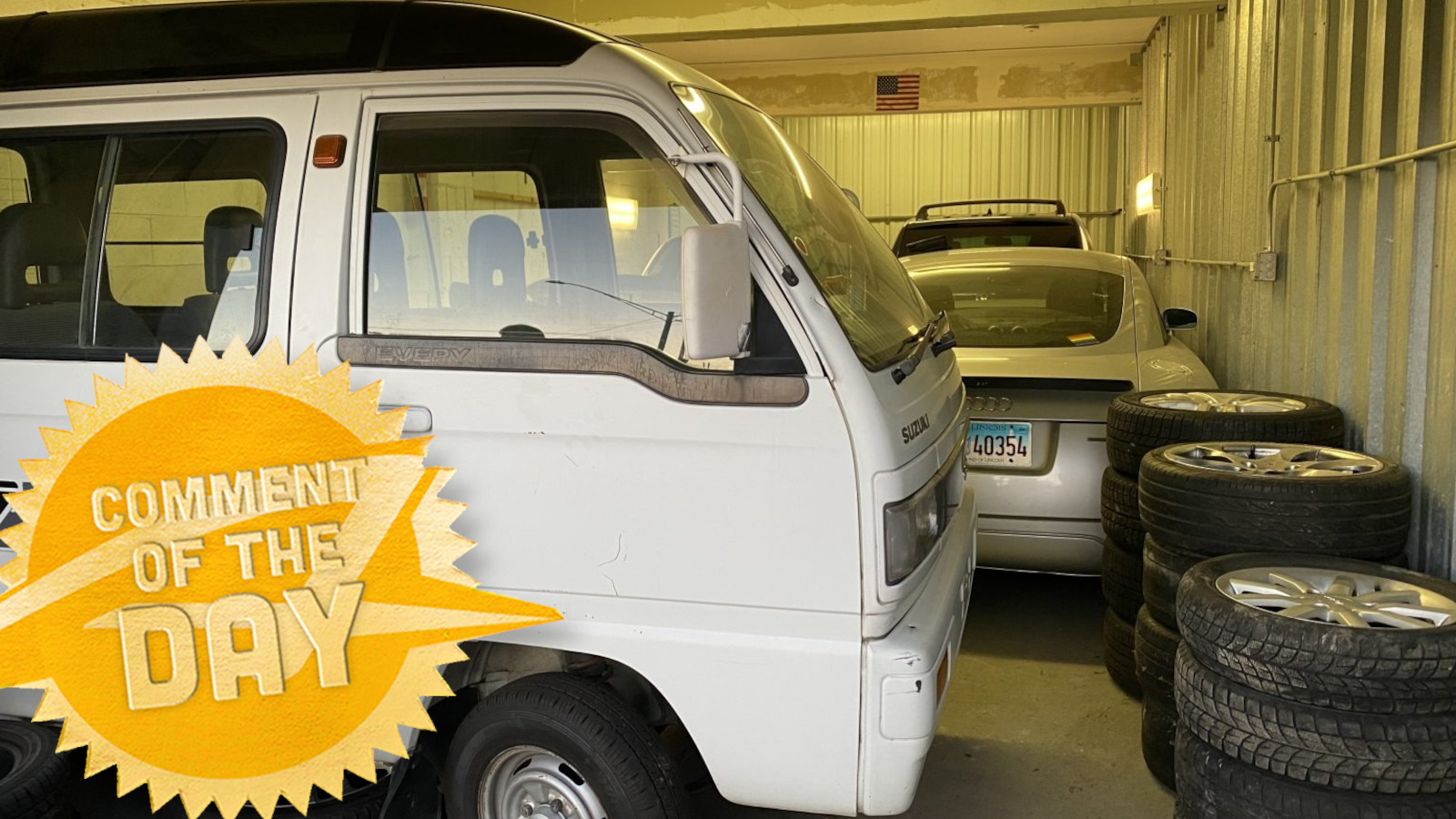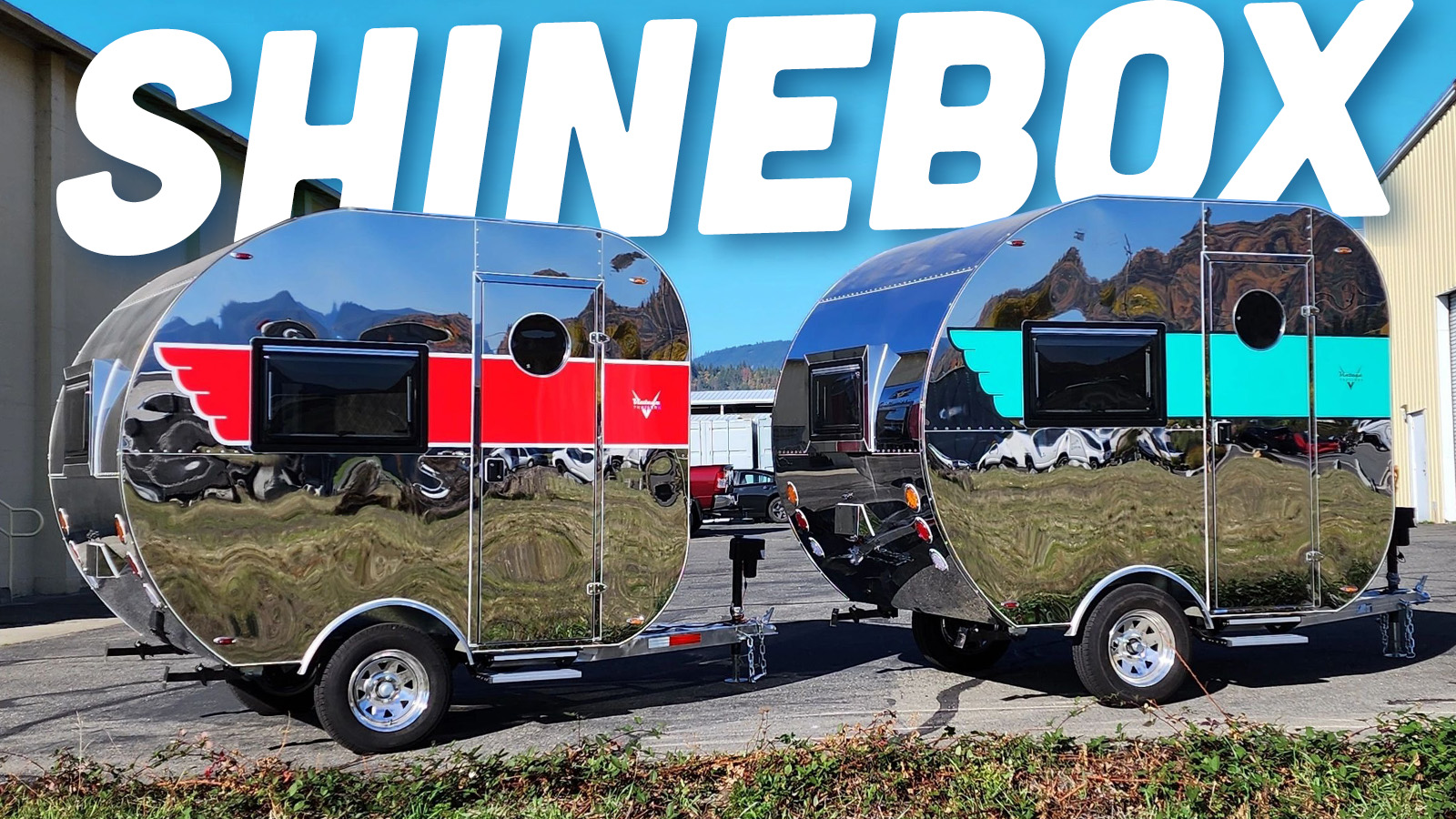Question: If you want a Mazda Miata with more power than the stock four-cylinder engine can provide, what would you do? You could go with an LS and make an overabundance of power and torque, but need to beef up the driveline to handle the sheer output. You could turbocharge the stock four-cylinder engine, but even the best turbocharged applications still have lag, and a turbo engine that pulls hard up top typically compromises on low-end response due to compressor sizing. You could go with a Honda K-Series inline-four, and while that will rev to the moon and make good power, sometimes you just want more combustion pulses than a four-cylinder can offer.
Happily, there is another tantalizing off-the-shelf option. Rocketeer Cars has been building Mazda Miatas with Jaguar AJ-V6 engines for nearly a decade, and not only is the horsepower figure similar to what you’d get from a stock 5.3-liter or 4.8-liter LS-based truck motor, there’s a whole lot to love about this V6 beyond its output on paper.
While the donor engine can be found in the Jaguar S-Type, its lineage is actually more complicated than that. See, Ford didn’t have the capacity to work on an overhead cam six-cylinder engine for its front-wheel-drive cars, so it contracted Porsche to do some of the engineering work. From there, Ford used Cosworth’s sand-casting method to make the cylinder heads, and the Duratec V6 was born. Jaguar, then owned by Ford, saw this V6 and decided that with its own cylinder head design, direct-acting tappets, and variable valve timing, it could be good enough to use under a leaping cat hood ornament. Thus, the AJ-V6 was born.

In stock three-liter form, it pumps out a tidy 240 horsepower and 221 lb.-ft. of torque. Crucially, it’s oversquare so it loves to rev, it comes with a standard redline of 6,800 RPM, and it’s actually 11 pounds lighter than the 1.8-liter engine in later NA Miatas. An interesting candidate for swapping into a Miata, made a little more interesting by a few tweaks Rocketeer Cars has made.

See, Rocketeer has designed its own carbon fiber intake plenums to not just fit nicely under a stock Miata hood, but help bump the V6 up to 280 horsepower. That’s 143 percent of what a 1.6-liter Miata made when new, all in a car that weighs roughly the same. Translation: 7.9 pounds per horsepower, slightly better than a Porsche 718 Cayman GTS 4.0. Back in 2017, Evo had a go in a Rocketeer development car, and while the plenums and tune weren’t ironed out yet, the results sound spectacular. As per the magazine:
The V6 takes a moment to catch and in this pre-production phase it’s a little unhappy when cold or on very light throttle openings. But damn does it sound good, with a rich, throaty note.
Every slightest movement of the throttle pedal, once past the initial stutter, results in instant response. Tom says the plenums may dull this slightly, but the trade-off will be perfect manners at low revs and more power at the top end. Today’s limit is around 6000rpm but even that’s enough to give the growling MX-5 ample pace, with one of the best soundtracks I’ve heard from a car in years.
Admittedly, the swap is not a cheap kit, but it is comprehensive. For £5,995 or just under $8,000, you get a whole new subframe, new engine mounts, a throttle bracket, special accessory drive parts, an electric water pump, a full exhaust system including manifolds, a baffled oil pan, the adapter plate, clutch and lightweight flywheel needed to mate the V6 up to the Miata transmission, carbon fiber intake plenums, an oil filler tube, throttle bodies, basically everything needed except the engine itself and the electronics.

Should you wish to not piece the electrics together yourself, Rocketeer sells a kit with the full harness, brand new pre-tuned standalone ECU, all the necessary sensors, and idle air control valves for £1,995, or about $2,653, and they’ll even help you with an engine for additional cost. Oh, and if you want to do the driving but not the wrenching, turn-key conversions start at £16,662 (around $22,170 at current conversion rates), or you could go really nuts and have them build you a restomod, a ground-up refurbishment and personalization of a V6-powered Miata.

In essence, Rocketeer Cars can get you the parts to build a much quicker Miata, or build you something like a Singer-modified Porsche 911 or an Alfaholics GTV for far less cash than some of these ultimate mega-dollar restomods that have been gripping the car scene. It’s a properly fascinating endeavor, giving the best-ever copy of a British sports car a British dose of extra performance, all while keeping the Mazda DNA largely intact. After all, a variant of the three-liter Duratec V6 with variable cam timing was used in the Mazda 6.
Top graphic credit: Rocketeer Cars
Support our mission of championing car culture by becoming an Official Autopian Member.







It all seems like a stupid way to burn money instead of gasoline. Sure, a 280+ HP Miata sounds like a riot, but I don’t want to drive a Frankenstein-mobile. And I got that kind of acceleration (and probably more) out of my system back in my motorcycle days.
I will say I was impressed to read that Ford/Jaguar made an engine with 50% more cylinders and nearly twice the displacement, that actually weighed less than Mazda’s original. And I have no idea how reliable these engines were.
Ok Jaguar more power but seldom works
So the AJ-V6 was based on the Duratec V6 which itself was based on the Mazda K engine that was contemporaneous with the NA Miata. I realize they’re all slightly modified from one another, but I’m sure it’s cheaper to pull the 2.5 KLDE V6 from a Ford Probe 626, or Millenia and shove it into an NA, let alone the supercharged 2.3 KLZEM to get almost the same power PLUS supercharger whine.
KLDE Miata swaps are definitely out there, and I love em. That’s an engine that I wish got more love than it does, and it seems like it fits very well in an NA.
I can certainly see the appeal. The nearly identical weight is going to be a key component to keeping that viscerally good Miata handling, and as a side effect it probably sounds insanely good.
I quite like mine slow, though.
I like the complete refusal British people have to buy wheels from any brand other than Rota for some reason.
I’d love to do this swap in my own Miata as the kit is incredibly complete and well polished, but I’ve ruled it out because I don’t trust the US engine supply.
I’m prepping one of my Miatas for a Honda JV6 swap instead.
If I’m doing an engine swap I want the cheapest way to make 240 horsepower. I doubt a Jag engine meets that criteria. There are lots of domestic V6’s making 240 horsepower that are cheaper and more readily available.
Except the cheapest way to make 240 hp in a Miata is a turbo kit, not an engine swap.
And while a LFX (Chevy 2010+ V6) engine swap is a thing, most domestic V6s don’t fit very well in a Miata dimensionally and thus aren’t worth the trouble as engine swap candidates. .
I do endurance road racing and I love the Miata platform. Turbos dont do very well being driven wide open 8-10 hours at a time. Another side effect of endurance road racing is I break shit all the time. sure would hate to have to find/pay for Jag parts. I would put up with the headache of a tight fit to avoid that.
Yeah, I could see how in that application a turbo setup would definitely not be the way to go, or a Jag engine for that matter.
For endurance road racing, would having the valve cover sticking up through a hole in the hood run afoul of any rules? Because if not and it’s a dedicated race car, then swapping in a Ford 3.5/3.7 might be doable. An LFX swap would probably be easier though.
I love this swap so much. Has always felt like the perfect solution for a big power Miata with tons of extra character. A supercharger is probably the best affordable solution for more power but these feel so much more special. And those early Ford duratec v6s and derivatives are one of Fords best and most underrated engines.
Not sure why someone would not put a 2.0 turbo motor in it then.
Mercedes has several which make over 350 hp out of just 2 liters. Insanity.
I’d think sourcing one of those engines would be a few times more expensive, and then there’s still the work of adapting it.
It would be a sick project, but I’m thinking you’d be in for pushing $20k in parts to put in a $8k Miata and then there’s labor.
After giving my own comment some thought ; the problem would not be the engine – things can be gotten for a certain price – but the damn ECU and how to make it work in the Miata.
Which is too bad, early M133 engines make 355 hp and are now over 10-12 years old so a decent ‘cheap’ one should be possible to find. Again – not the easiest of engine swaps, but if it could have worked in an MX-5 then it would be a hoot.
Note they want $22k for a turn key solution. That’s a lot of budget for all kind of fun conversions.
Doesn’t excactly sound very genious:
-If there’s something that just works and works and works for years and years, it’s Japanese engines.
-If there’s something that don’t, it’s British engines..
It’s mostly a Ford engine
Doesn’t sound much better ;-D
Pretty neat, but would never pass smog in CA.
Having owned turbo and nice revving NA cars, I prefer naturally aspirated for the linear and smooth throttle response.
Ironically I just bought a 2.5L, turbocharged NC Miata 3 days ago. My son has an NC Miata as well and his drives better, but is much slower.
The GM LFX motor is a good cantidate for a swap. That might be my next move.
I’m jealous. Congratulations on living in a non-CARB state.
Flyin Miata’s turbo kits are CARB legal.
True, but 2.5 liter-swapped NCs aren’t CARB legal (the NC comes with a 2.0 stock). GM LFX swaps are also not CARB legal I believe.
Don’t be too jealous, Maine is a CARB state if I recall. They’ve never done an emissions sniff test but I’m sure they will take issue to the lack of Cats on the car. If I ever get around to bothering to get it inspected…
Henry Catchpole made a video on these a couple of months ago. The worked up one with ITBs that revs to 9000rpm sounds very enticing.
High horsepower naturally-aspirated 1.8 liter builds are one of the most satisfying ways to get lots of horsepower out of an NA/NB Miata, but also one of the most expensive. Ask me how I know.
Getting a 1.8 liter to rev to 7800 RPM safely requires at a minimum upgraded valve springs and solid lifters. Ideally you’ll also upgrade your oil pump and damper as well. If you want to go higher, you really need forged rods, and getting to 9000 rpm is definitely going to require a forged crankshaft, not to mention camshafts that can actually make horsepower at 9000 rpm.
ITBs are fun but require a ton of supporting mods on the 1.8 to get the most out of them.
This was ITBs on the V6.
So install a Ford motor, not a jag, similar to an LS.